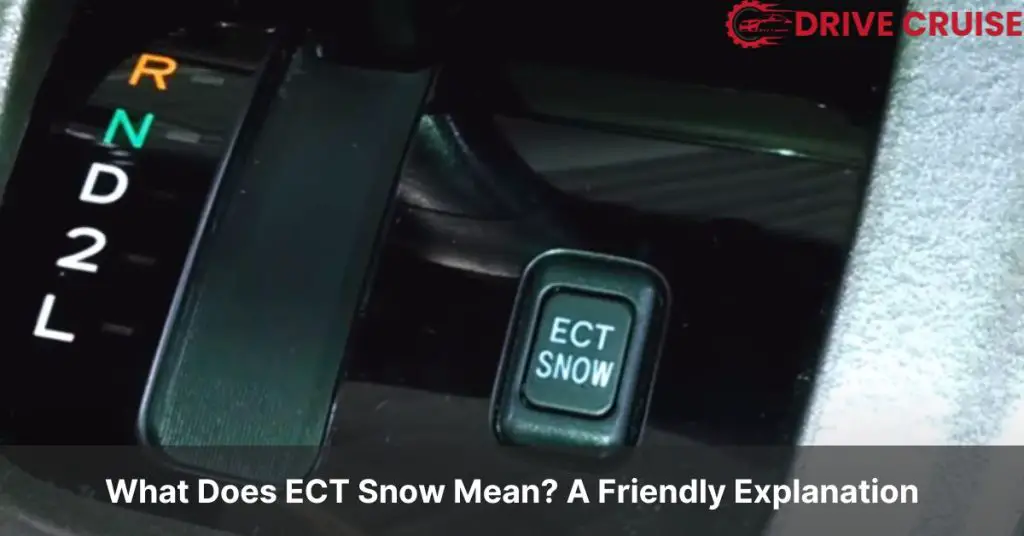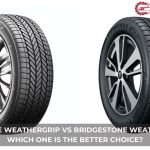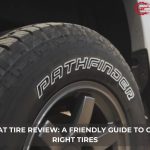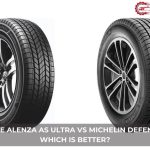Have you ever found yourself driving in wintry conditions and noticed a button in your car labeled “ECT SNOW” but had no idea what it does? You’re not alone. We’ve all been there, scratching our heads, wondering how a simple push of a button can make a difference in our driving experience. Well, wonder no more! We’re here to shed some light on this little-known feature that can be a game-changer on snowy roads.
ECT SNOW, or Electronically Controlled Transmission Snow mode, is a nifty feature designed to help your vehicle tackle slippery conditions with ease. But how does it work, and when should you use it? Let’s dive into the world of enhanced driving technology and discover how this feature can make your winter drives safer and more comfortable. Join us as we explore the ins and outs of ECT SNOW and why it might just be your best friend during the winter months.
Understanding ECT Snow in Your Vehicle
Exploring the intricacies of the ECT SNOW feature in vehicles offers us a deeper dive into how cars manage to tackle the challenges posed by snowy and icy roads. This system, specifically designed to enhance driving safety during winter, plays a critical role in ensuring smooth acceleration under difficult conditions.
Primarily, ECT SNOW adjusts the vehicle’s transmission settings. When activated, this feature alters the shift points of the car. Normally, a vehicle shifts gears to optimize performance and fuel efficiency. However, under the ECT SNOW mode, these shifts occur at lower RPMs. This adjustment is crucial because it reduces the torque applied to the tires, minimizing the risk of wheel spin on slippery surfaces.
Another key aspect of ECT SNOW is its impact on throttle response. Upon activation, the system ensures that the throttle’s responsiveness is dampened. This means that when you press the accelerator, the increase in speed is more gradual as opposed to the immediate surge you’d experience under normal conditions. This gradual acceleration is vital in preventing loss of traction, which is a common problem when driving on snow or ice.
Drivers should be aware that the ECT SNOW feature is not a substitute for winter tires or other snow-specific vehicle modifications. Rather, it’s an additional tool that works alongside these other measures to offer a safer driving experience. It’s most effective when used in situations where traction is a concern, like starting from a stop on an icy road or navigating through freshly fallen snow.
It’s important to note, however, that the ECT SNOW setting should be turned off when it’s no longer needed, such as driving on clear roads. Keeping it on can lead to suboptimal performance and fuel efficiency in normal driving conditions.
Understanding when and how to engage the ECT SNOW feature can significantly enhance our winter driving experience, offering us an added layer of safety when navigating through the challenges of snowy and icy roads.
The Science Behind ECT Snow
Diving deeper into how ECT SNOW works, it’s fascinating to see the interplay between vehicle mechanics and road conditions. This feature, standing for Electronically Controlled Transmission under Snow conditions, capitalizes on modern technology to counteract the challenges posed by driving on snow-covered roads. Essentially, it fine-tunes the vehicle’s transmission settings, ensuring that the power delivered to the wheels is modulated to reduce the risk of tire slippage.
When activated, ECT SNOW alters the vehicle’s transmission shift patterns. Normally, the aim is to shift to higher gears quickly for fuel efficiency. However, in snow mode, the system delays these shifts, keeping the vehicle in lower gears longer. This adjustment results in lower power output at the wheels, minimizing the chance of spinning out on slippery surfaces. Moreover, by controlling throttle response, the system prevents sudden acceleration, further stabilizing the vehicle during precarious winter drives.
What makes ECT SNOW stand out is its ability to instantly adapt to the conditions without driver intervention. Once engaged, sensors monitor speed, wheel traction, and other critical performance indicators. If the system detects wheel spin, it immediately adjusts the throttle and shift points to stabilize the vehicle. Thus, drivers can maintain focus on the road, relying on ECT SNOW to navigate safely through snowy terrains.
Coupled with winter tires and appropriate vehicle modifications, ECT SNOW provides a complementary layer of safety. It’s a prime example of how automotive technology evolves to meet the demands of different driving conditions, ensuring that safety remains a top priority. Understanding how ECT SNOW operates, drivers can confidently handle their vehicles, knowing they have an additional tool to combat the unpredictability of winter roads.
Comparing ECT Snow to Traditional AWD and 4WD Systems
When exploring the intricacies of ECT SNOW, it’s imperative to understand how it stacks up against traditional all-wheel-drive (AWD) and four-wheel-drive (4WD) systems, especially in wintry conditions. AWD and 4WD are designed to improve vehicle traction by distributing power to all four wheels, which can be crucial on slick, icy roads. However, ECT SNOW, with its focus on transmission settings and throttle response, offers a different approach to enhancing safety in snowy weather.
Firstly, AWD systems operate by sending power to the wheels with the most grip to prevent slippage, a feature that remains active under all driving conditions. On the other hand, 4WD systems, often found in trucks and SUVs, can be turned on or off by the driver and are best suited for low-speed, rough terrain rather than icy roads.
ECT SNOW, however, doesn’t directly alter the distribution of power to the wheels like AWD or 4WD. Instead, it adjusts the vehicle’s transmission behavior and throttle response to reduce the likelihood of wheel spin upon acceleration. This subtlety in approach means that, while AWD and 4WD systems increase traction by mechanically adjusting power distribution, ECT SNOW works electronically to manage how power is applied, aiming to prevent wheel spin before it starts.
This feature is particularly useful in vehicles equipped with either AWD or 2WD, offering an additional layer of safety beyond what mechanical systems provide. In essence, if AWD and 4WD help a car to maintain grip on slippery surfaces, ECT SNOW ensures that the vehicle uses this grip efficiently, minimizing the chances of losing control due to sudden wheel spin.
Moreover, ECT SNOW’s ability to adapt instantly to changing road conditions without driver intervention complements the mechanical traction control provided by AWD and 4WD systems, offering drivers a more rounded safety net when navigating snowy and icy roads. This makes vehicles equipped with ECT SNOW, whether AWD or 2WD, more versatile and safer during the winter months.
While traditional AWD and 4WD systems focus on improving traction mechanically, ECT SNOW enhances vehicle stability and safety on snowy roads through sophisticated electronic control of transmission settings and throttle response. This advanced technology offers drivers a significant advantage in maintaining control and stability in challenging winter conditions.
When to Use ECT Snow
Knowing when to activate the ECT SNOW feature on your vehicle is crucial for maximizing your safety and driving efficiency on winter roads. Given our previous discussion on the benefits of ECT SNOW in enhancing vehicle stability and safety in snowy conditions, let’s delve into the ideal scenarios for its usage.
First, it’s essential to activate ECT SNOW as soon as you encounter snowy or icy road conditions. Unlike AWD or 4WD systems that might require slippage to occur before engaging, ECT SNOW proactively adjusts your vehicle’s transmission settings before any slip happens. This anticipatory action helps in maintaining traction right from the start of your snow-covered journey.
Second, during light snowfall or on roads with a thin layer of snow, the ECT SNOW feature plays a significant role. In these conditions, the potential for wheel spin increases due to the deceptive traction levels. ECT SNOW mitigates this risk by adjusting the power delivery more smoothly, ensuring that you maintain control of the vehicle.
Additionally, when driving on roads that have not been plowed or treated, the ECT SNOW setting becomes invaluable. On such surfaces, traction is at a premium, and the electronic adjustments made by ECT SNOW can be the difference between getting stuck and continuing your journey safely.
Lastly, when ascending or descending hills covered in snow, activating ECT SNOW provides an added layer of security. The feature’s ability to manage throttle response and shift patterns more effectively allows for more controlled and gradual movements, which are crucial on inclines and declines where traction is limited.
In essence, whenever winter conditions present challenges to maintaining traction and stability, ECT SNOW stands out as a sophisticated ally. It ensures that drivers retain control and stability, reducing the chances of skidding or slipping by electronically managing the vehicle’s power application. By understanding when to leverage ECT SNOW, drivers can navigate snowy roads with greater confidence and safety.
Real-World Applications of ECT Snow
In real-life scenarios, the ECT SNOW button showcases its value by transforming challenging winter drives into safer journeys. Let’s explore some specific applications of this feature:
Enhanced Safety on Slippery Slopes
Driving on slopes, whether ascending or descending, becomes notably safer with ECT SNOW activated. The system’s adjustment to throttle response ensures that power is applied gradually, reducing the chances of wheel spin and loss of traction on icy slopes. This is especially helpful in areas where roads are steep and snow or ice can accumulate quickly.
Improved Control in Light Snow Conditions
For those living in regions where light snowfall is common but not severe enough to warrant snow chains or winter tires, ECT SNOW proves invaluable. By optimizing the vehicle’s performance for these conditions, drivers maintain better control and stability, making routine commutes safer without the need for specialized winter gear.
Assisted Handling on Untreated Roads
Untreated roads, lacking salt or sand, present challenging conditions for most vehicles. Here, ECT SNOW steps in by fine-tuning the vehicle’s mechanics to better handle such surfaces. It ensures that any sudden movements, such as quick accelerations, are smoothed out to prevent the wheels from slipping, providing a layer of security on roads that have not been prepped for winter conditions.
Smoother Journeys in Mixed Conditions
During winter, weather conditions can change rapidly. ECT SNOW helps navigate these unpredictable terrains by automatically adjusting the vehicle’s settings as needed. Whether transitioning from a cleared highway to a snow-packed side road or encountering icy patches unexpectedly, this feature allows for smoother, more predictable handling without driver intervention.
In every situation, ECT SNOW stands out as a testament to the engineering ingenuity aimed at enhancing driver security and comfort during winter. By understanding and utilizing this feature, drivers can navigate winter’s unpredictability with confidence, knowing their vehicle is equipped to handle the challenges icy and snowy roads present.
Conclusion
We’ve seen how ECT SNOW is a game-changer for winter driving, offering peace of mind when roads turn treacherous. It’s clear that this feature isn’t just about technology—it’s about making our journeys safer and more comfortable in the snow. Whether we’re facing a light dusting or a full-blown snowstorm, knowing our vehicle can adapt to the conditions is incredibly reassuring. Let’s embrace the winter adventures ahead with confidence, thanks to ECT SNOW.
Related Posts:










